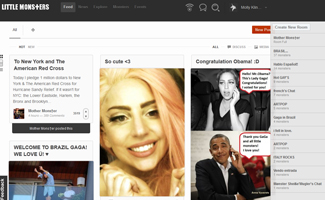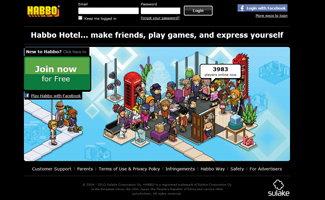The 7 Most Popular Facebook Alternatives For Teens

In an age when many parents worry about their teens spending time on social networks, Peggy Hernandez said she trusts her 16-year-old daughter.
“When my daughter was 14, she started becoming more independent with social media,” the at-risk youth counselor from Sheridan, Colo., said. “It’s my privilege to look at her phone, but I’ve given her more privacy. That’s part of their identity nowadays. That’s how they express themselves and how they learn. I’m not saying I totally want to embrace it, but I have to understand and expect it.”
Hernandez does check her 16-year-old’s phone and Internet use periodically, but doesn’t friend her on Facebook or follow her on Twitter. She said she’s seen enough of her daughter’s tweets and writing to step back. “I trust her in the sense that she’s very well-grounded,” she said.
Hernandez’s daughter Madelyn is one of the 80 percent of teens online using social networking sites. Just more than half of that number also have accounts on more than one site, according to the Pew Internet and American Life Project.
Facebook, with 1 billion users, is still the most popular social network. However, with parents also on Facebook, many teens are looking for other places to build their identities and communicate with friends.
Alice Marwick, an assistant professor of communication and media studies at Fordham University, said that Facebook is challenging for teens because they want to share with a smaller group of friends. “Basically it’s called contact collapse,” she said. “This is especially difficult for teenagers, to also mix in with their day-to-day friends with parents, coaches and teachers.”
Madelyn Hernandez agreed. “I do have family that requests to be friends with me on Facebook and I don’t say yes,” she said. “It’s not that I have things to hide on Facebook, but I don’t want my family all up in my business…They have something to say about everything.”
Stay in the know with Laptop Mag
Get our in-depth reviews, helpful tips, great deals, and the biggest news stories delivered to your inbox.
Pew also tells us that 61 percent of online teens reported that their parents have checked their profiles. Another 39 percent of parents have friended their children, which is “associated with an increased likelihood of parent-child conflict over social media.” Perhaps this is the reason that 36 percent of teens surveyed by Common Sense Media said they wished they could go back to a time before Facebook.
“Facebook is kind of the Walmart of sites,” Marwick said. “You can get all of your stuff from there, but teenagers want to buy from the Gap or Hot Topic. There’s an appeal to using different sites.”
“Teen communication is often misinterpreted by adults,” Marwick said. “That’s why they’re on such sites as Twitter where they have private accounts. Their parents don’t have accounts on Instagram. If they’re on Twitter or Tumblr, parents don’t even know they exist.”
Where Teens Are Migrating

Habbo Hotel
This social networking site from Finland is basically a huge game aimed at kids and teens to create a world in a hotel. Users start off with a small room and an avatar, and must socialize and play games to earn points and level up. The site has 250 million users and recently came under fire for sexually explicit chat, according to the “Telegraph” (U.K.). Another negative is that teens have to pay real money to get virtual furniture and other goodies for their rooms.
This photo-sharing app is very popular with teens because of its wide selection of hip filters. According to a Piper Jaffray survey of 7,700 of teens across the country, Instagram was a solid second choice behind behemoth Facebook (although Instagram is now owned by the social network). There have been worrisome “sexting” stories about the app with 50 million users, but statistics show that both sending and receiving sexually explicit photos has been on the decline for teens.

LittleMonsters
If Tumblr is a specialty boutique in the mall, LittleMonsters is the little store across town with the quirky owner. It’s all about Lady Gaga, so if your teens don’t love her, they will be unlikely to use it. But if they do — it’s Lady Gaga 24/7, with its thousands of Little Monsters commenting on every new Gaga photo, news item or tweet. No membership numbers have been released since the network opened to the public in July. But with Gaga’s 26.8 million Twitter followers and 52.5 million Facebook friends, it’s a fair bet this site is poised to grow quickly.
Tumblr
This blogging site, half of whose traffic is composed of users under age 25, can be used to post Justin Bieber death fiction, notes on this week’s “Glee” episode or anything else. It doesn’t have to be long or emotional, because many Tumblr sites are images only. There are 78 million of these blogs, with new ones starting every day based on memes or viral sound bytes. However, fan Tumblr pages seem to be the most passionate and frequently updated.
For teens, Twitter use doubled from 8 to 16 percent from 2010 to 2011. With its irreverent use of hashtags and 140-character limits, it can be a rush of information, but its 500 million users find it fun with friends and social-media savvy singers, comedians and actors. Users are more likely to be female (78 percent) but Twitter also has the highest rate of users streaming live video to the Internet (25 percent).

Video Chat Apps
Thirty-seven percent of teens use a video chat client, according to Pew. For teens ages 16 to 17, the number jumps to 39 percent. While Facebook, Google Hangouts and Skype are common places to use video chat, teens also go to other video chat sites such as OoVoo, a social video site with 54 million users, or Tango, which has 65 million users. “These sites give teens a way to video chat away from Google+ or other sites that require real names,” Marwick said. “It gives teens a place to experiment with different identities and political opinions.”
YouTube
As anyone watching MTV knows, it’s hard to actually catch any music videos. So it’s not surprising that many teens use YouTube to see them and listen to music. As many as 64 percent of teens in a Nielsen survey said YouTube was their favorite place to listen to the latest song. While Pew reports that only 9 percent of teen boys and 3 percent of teen girls online have an account, you don’t need an account to watch, share or like videos.
